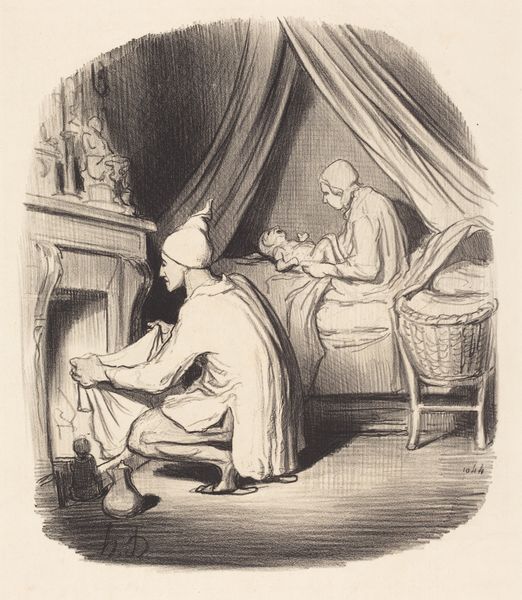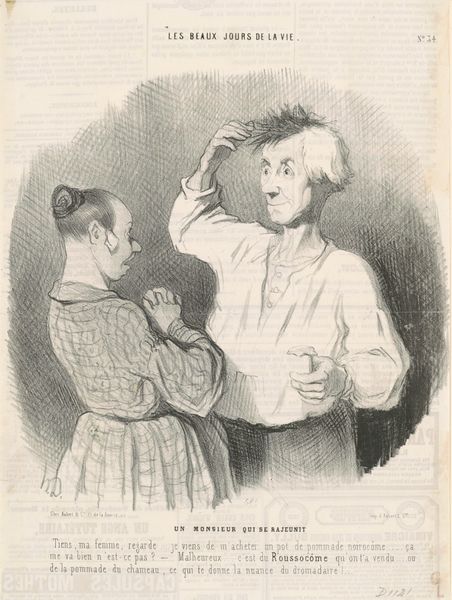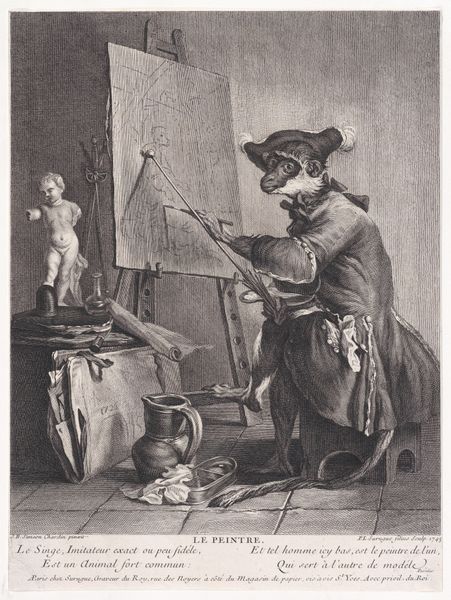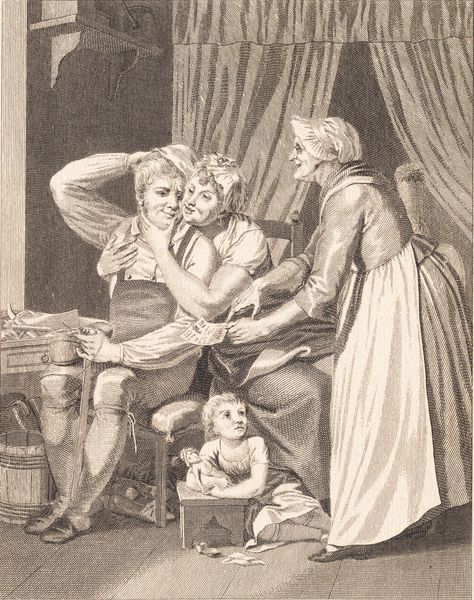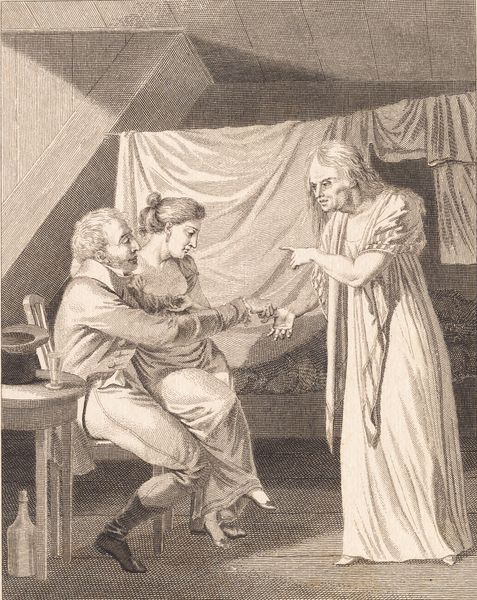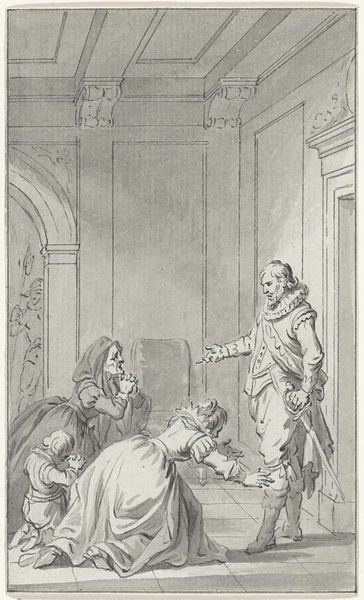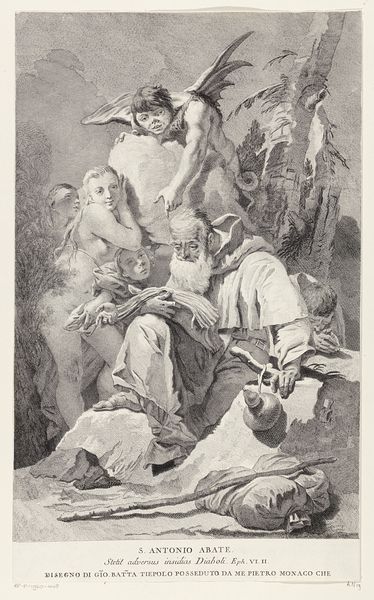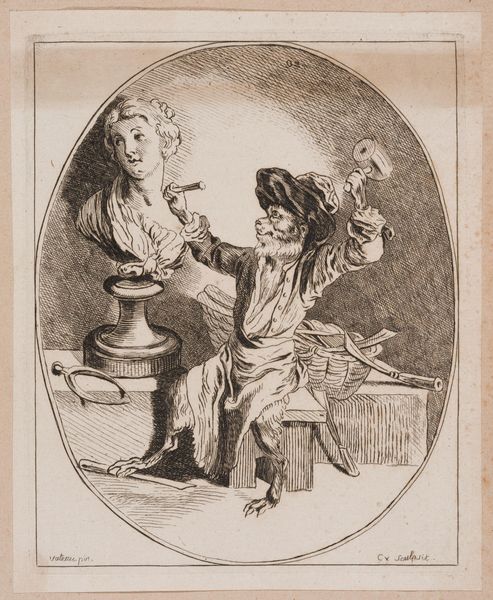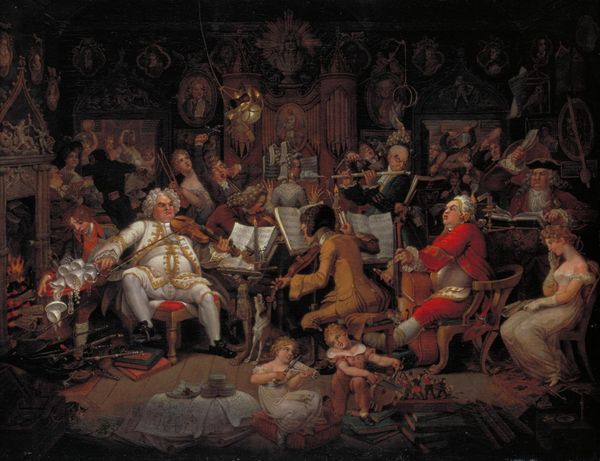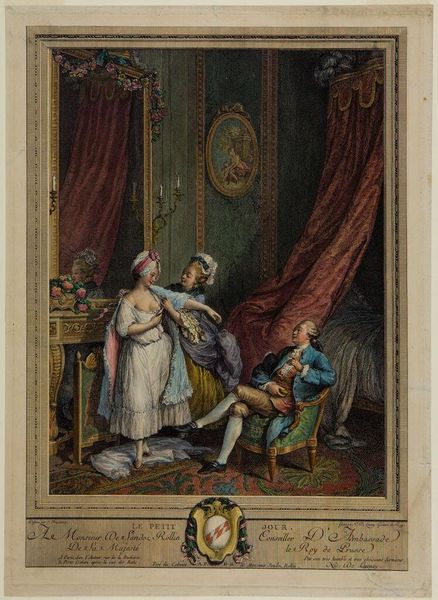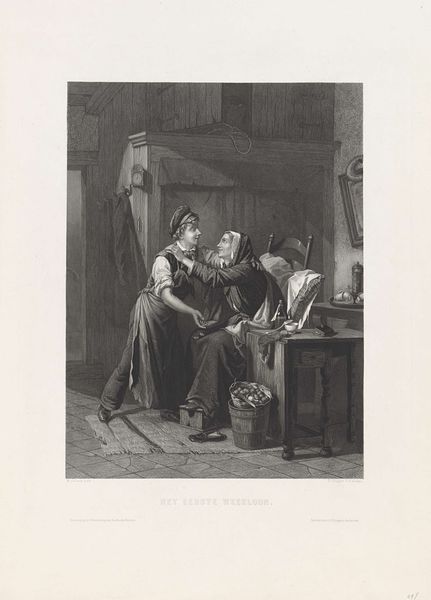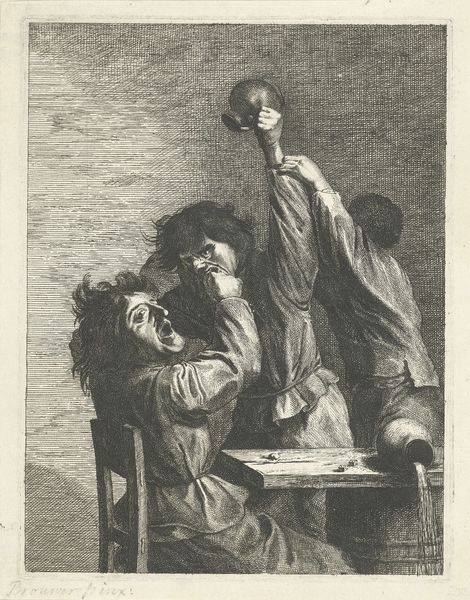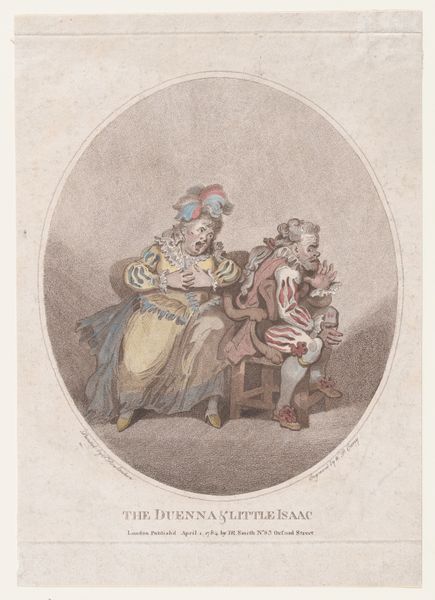
painting, oil-paint, impasto
#
portrait
#
painting
#
oil-paint
#
folk art
#
impasto
#
group-portraits
#
genre-painting
#
realism
Copyright: Norman Rockwell,Fair Use
Curator: Norman Rockwell’s 1928 oil painting, "Checkers," gives us a fascinating glimpse into the artist's representational style. Editor: It feels oddly…contained. Like a staged scene rather than a candid moment. The palette is rich but muted, lending a melancholic air despite the implied activity of the checkers game. Curator: Absolutely. Rockwell constructed this genre scene within a social and historical framework. Look at the character archetypes – the clown, the businessman, the ringmaster and the chorus girl. It's a microcosm of early 20th century society. How would you say identity plays a role here? Editor: In fascinating ways. The clown is performing even off-stage, his makeup a mask hiding…what exactly? Is he seeking solace or validation through this game, or perhaps something else altogether? Even the ringmaster is out of his environment: perched on what seems to be a barrel and dressed out of his official work clothes. They’re all out of their element and therefore unable to play their part, exposing themselves. Curator: Precisely. The setting itself, a temporary tent or backstage area, underscores this sense of transient social dynamics. And how that impacts power relationships is key, even down to the smallest, non-human character! Editor: You mean the dog at the clown’s feet. I can see the social implications within what could be conceived a typical "genre-painting" artwork, yet there's such evident artifice. Each figure seems burdened by performance, the weight of societal expectations. It raises the questions; what norms are on trial? What commentary might Rockwell be trying to create within the historical framework of that moment? The dog adds an intriguing level of commentary given Rockwell was deeply conservative. What meaning might it have had for him to insert such symbolism within this framework? Curator: Indeed. "Checkers" isn’t simply a charming genre painting. It reflects Rockwell’s keen observation of social structures and class divisions. The use of the circus gives him a contained model from which to portray this micro social scene. The canvas unveils social structures playing out with great symbolism. Editor: For me, it also reflects a quiet acknowledgement of the struggles and vulnerabilities shared by people who, on the surface, might seem worlds apart, allowing for dialogues to emerge surrounding art history, politics, race and class. Curator: A wonderfully nuanced interpretation. Thanks! Editor: Thank you.
Comments
No comments
Be the first to comment and join the conversation on the ultimate creative platform.
